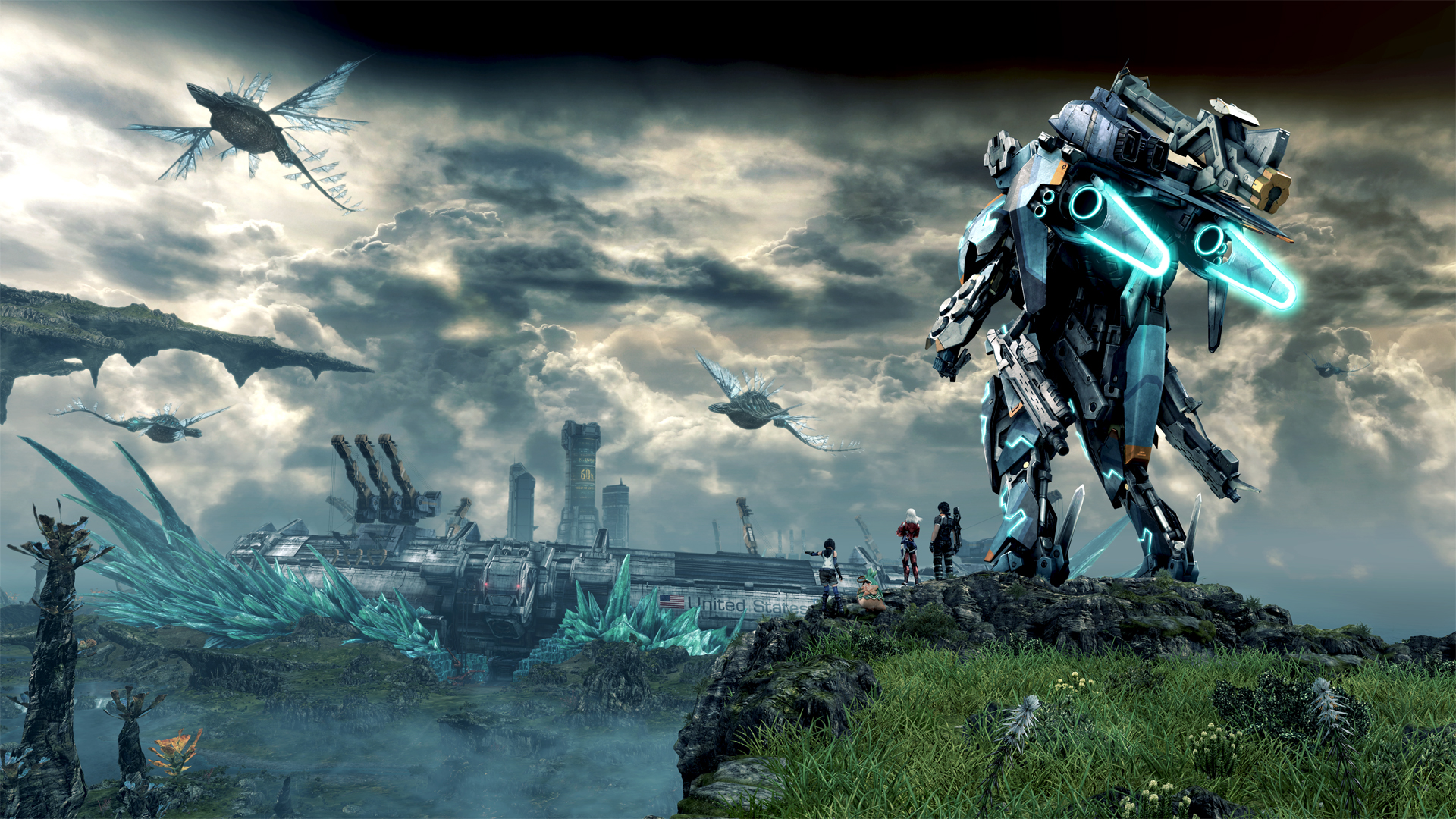GamesRadar+ Verdict
Xenoblade Chronicles X offers a resplendent world, fantastic combat, and transforming mechs, but figuring out how everything fits together isn't always easy.
Pros
- +
Gorgeous world begging to be explored
- +
Layers of complex systems unravel over dozens of hours
- +
Skells are a game-changer
Cons
- -
Not terribly great at explaining itself
- -
Weird pacing and a passive plot
- -
Hunting for quest items is a real grind
Why you can trust GamesRadar+
Xenoblade Chronicles X is a strange game, even by JRPG standards. The distant planet of Mira is harsh and unforgiving, filled with verdant plains and giant beasts, and Xenoblade unceremoniously plops you into the middle of it all and expects you to figure most of it out on your own. It's a lot to take in, and its opening hours are often as overwhelming as they are awe-inspiring. But if you can sift through its bewildering, convoluted systems and its lackluster plot, you'll find an adventure that's still well worth undertaking - and you'll get to pilot a giant mech while you do it, too.
Caught in the middle of a conflict between two rival alien factions, humanity makes the best effort it can to flee Earth's imminent destruction Battlestar Galactica-style, and ends up crash-landing on Mira, thousands of light-years away. So here you are, on a planet that’s filled with structures and rock formations that would never in a million years exist on Earth, and it's your job to carve out a space for humanity's survival. That means surveying the planet, gathering resources, fighting massive, screen-sized Tyrants and other, lesser beasts, planting data probes, and taking on odd jobs and requests from the citizens of New Los Angeles, the last bastion of the human race.
This struggle for survival becomes Xenoblade's overarching plot, and by making it the focus, Xenoblade avoids many of the pitfalls that plague narrative in open-world games while introducing a few new ones of its own. On the one hand, it makes sense for you and your crew to dink around for hours just chipping away at side quests because your work is usually a net positive for humanity as a whole. Unfortunately, this shift in focus makes for a passive narrative, with the biggest story beats happening to you, instead of because of you. It takes nearly a dozen hours for a proper villain to make itself known, and even longer for a conflict to arise out of it. While Xenoblade's sense of narrative scale is admirable, its big story beats are spaced too far apart, becoming brief punctuation marks after hours upon hours of other activities. It makes for a plot that ends up feeling sparse, and as a result its biggest twists fall a little flat.
But while the overarching plot is relatively weak, Xenoblade more than makes up for it by filling out the world with tons of interesting side stories. I helped a guy build a hot rod that would let him travel back to the future, inspired a newly-discovered species' newfound love for frozen pizza, and so much more. These vignettes are well worth taking the time to discover, vacillating between goofy and heart-wrenching and everything in between, and do a lot to flesh out both the world you're exploring and the people and species you come across while rewarding you with new items to buy or unlocking additional gameplay quirks. Best of all, these quests are able to do it without dumping a ton of lore over your head.
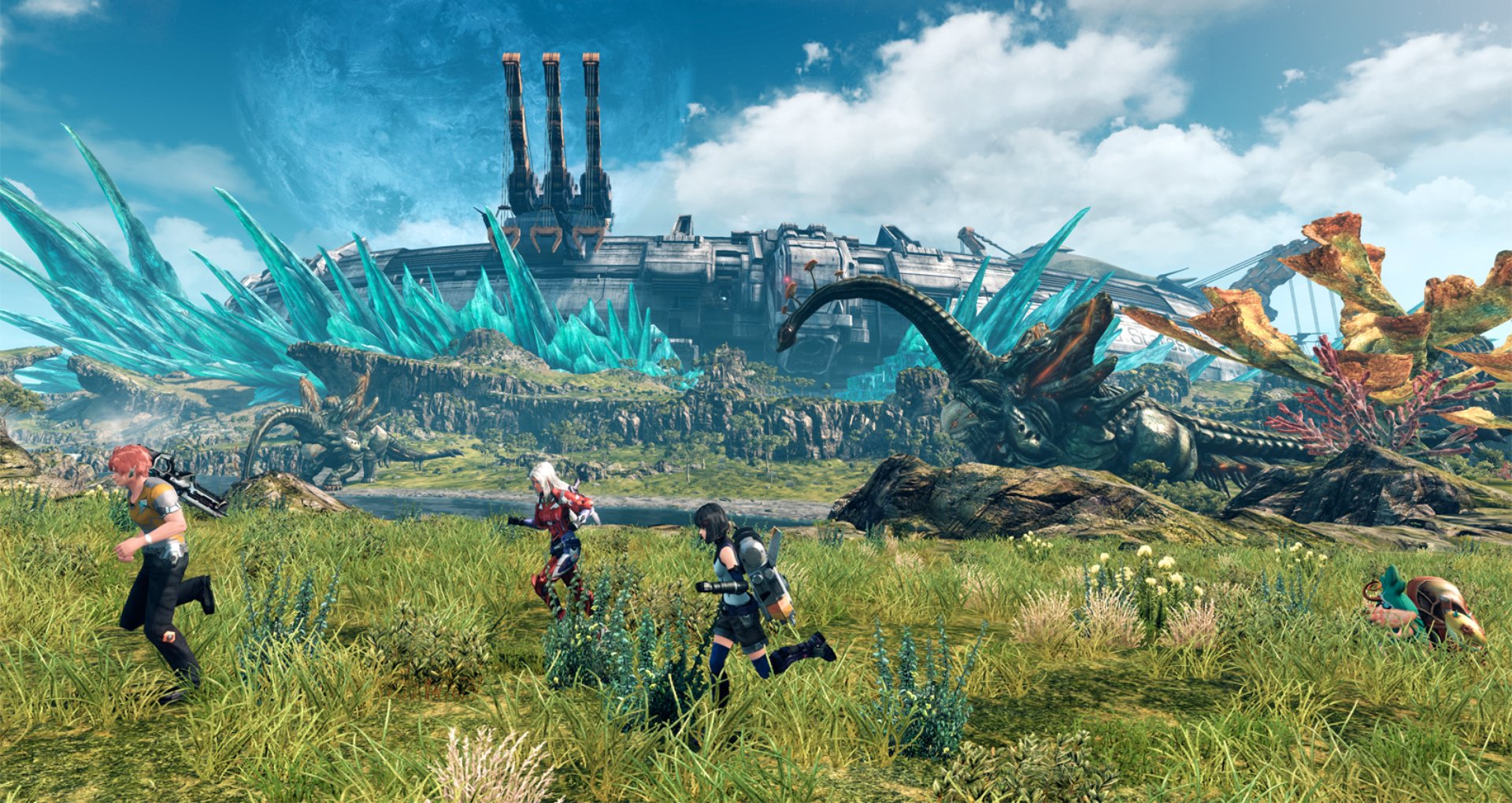
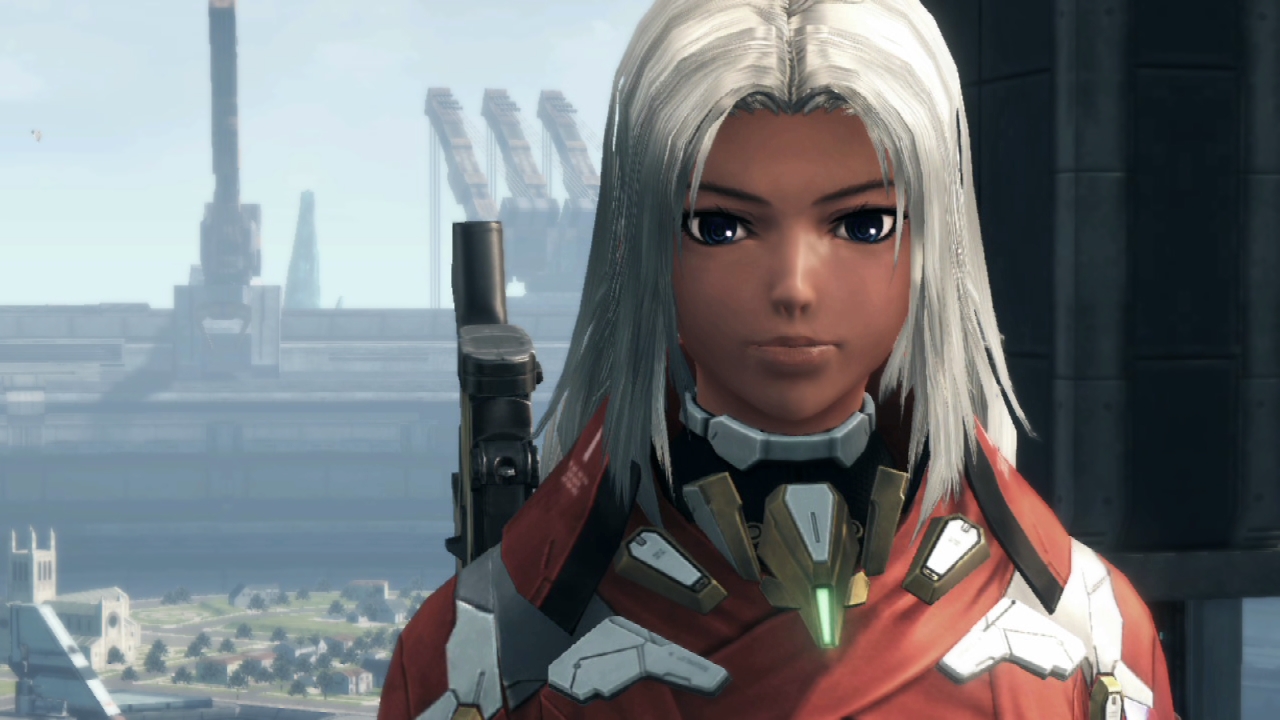
While Xenoblade is largely a single-player experience, there are a few hints of online connectivity that make it feel like you're part of something bigger. At a certain part in the story, you'll join a squad made up of 32 random strangers. These squads work together to tackle 'squad missions' - a subset of monsters to slay and items to find that will net you rewards once completed. You'll also be able to work together on a very specific set of multiplayer missions, and even leave messages with one another via Miiverse. It's not vital to the experience, but it adds another interesting layer of complexity that's worth exploring.
When you're not hoofing it to your next quest destination and soaking in the breathtaking sights, you'll spend your time fighting the indigenous wildlife in a fast-paced strategic combat system reminiscent of MMORPGs like World of Warcraft. Xenoblade's twist is that many of the skills used by various party members will combo with your own - follow up your buddy's stagger attack with your topple attack and you'll cripple your opponent for a few precious seconds. It's a complex, frenetic, multilayered system, and figuring out which combos work best keeps combat fresh, even when you have to grind a bit to level up your party.
Then you get your own Skell - Xenoblade's name for its giant transforming mechs - and they change everything about how you interact with the world. After spending over 30 hours exploring Mira on foot and getting intimately familiar with its layout, the Skells allow you to speed through - or, eventually, fly over - previously insurmountable obstacles. Xenoblade really wants you to earn it too, taunting you with glimpses early on and forcing you to undergo a series of fetch quests and trials to prove you deserve to own one.
Once you get one, you'll find that combat is similar, though your attacks have a lot more punch. There's also more risk involved, as you'll need to watch your fuel and health levels as you use them. Run out of fuel and you won't be able to use abilities in combat; blow up your Skell and there's a chance that you'll lose it for good unless you pay a hefty repair fee. Skells provide a unique risk/reward hook to the gameplay - and let's be honest, they look rad as hell.
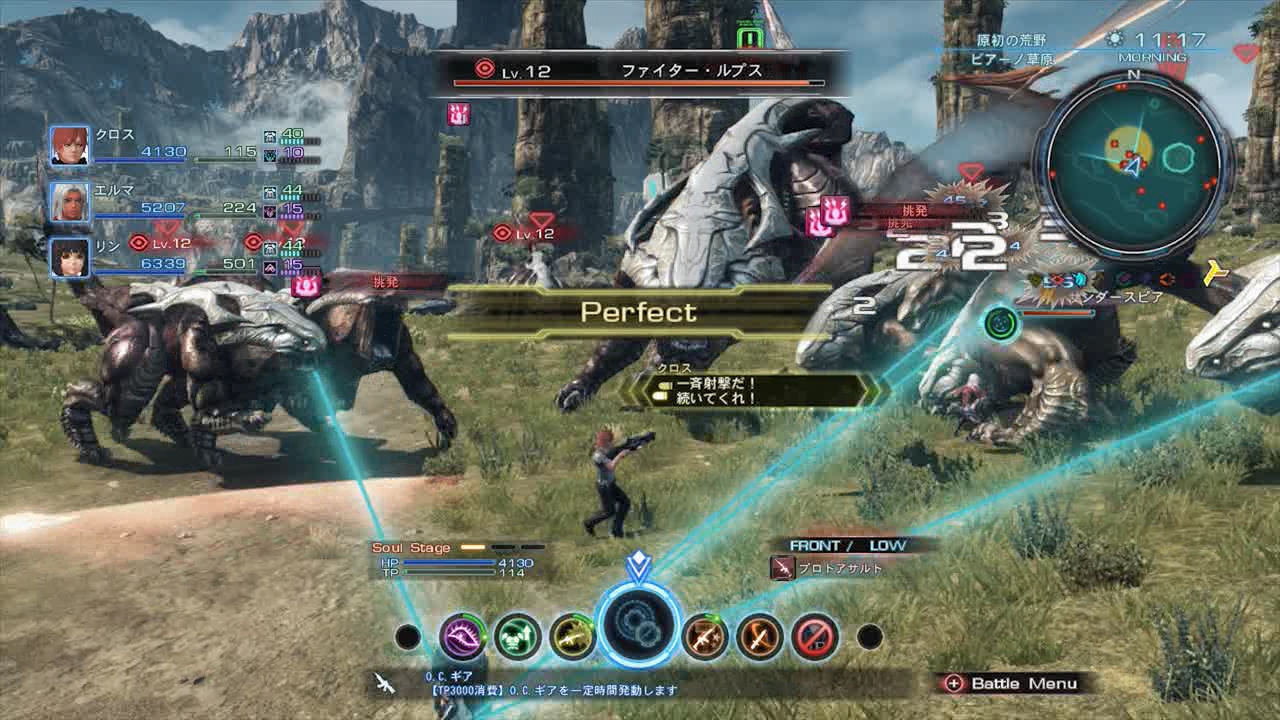
In addition to fighting the native flora and fauna, you'll have to scour the globe for randomly-generated item crystals, and that's where much of Xenoblade's grind sets in. Most missions involve some combination of finding particular items or defeating a certain set of monsters, and require you to smartly navigate the environment to find your objective. Unfortunately, many of Xenoblade's quests don't explicitly tell you where you need to go, leaving you to wander each of Mira's five ridiculously large continents for hours while you hunt down arbitrary item drops. It's best to just load up on as many side quests as you can and whittle away at them while you take on the more unique affinity and story quests, or you'll drive yourself crazy for hours looking for a single 'California sunset'. You really shouldn't have to do this, but it's the best way to keep things moving forward, and at least you get some regular rewards for your efforts.
If all of this sounds like a lot of information to handle at once, that's because it is, and Xenoblade shoves you into the deep end with only a few tutorial messages to get you up to speed. There are dozens of incredibly deep intertwining systems that are given a screen or two of explanation before you’re thrown to the grexes. I didn't really understand the importance of setting up mining probes until after I realized you can spend miranium to upgrade weapon shop inventories; or that it's important to switch out characters often because certain vital story quests are locked off until you develop a strong enough bond with your teammates; or that running away from battle is a perfectly viable option after discovering a quest objective on the other side of an area filled with monsters 20 levels higher than your current party.
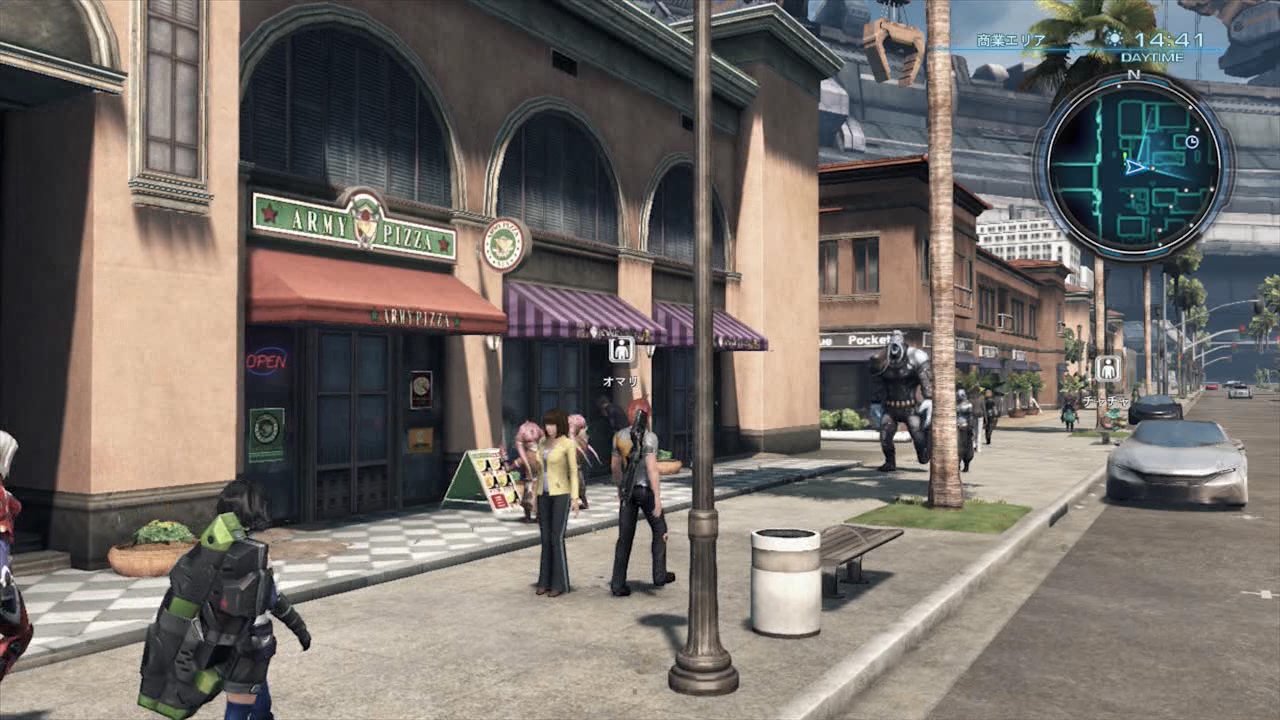
I wish Xenoblade made a better effort to explain all this stuff in-game, rather than forcing you to read the on-disc manual to understand everything, but the longer you play, the more information you'll be able to absorb and process. Plus, the lack of punishment from dying and the plentiful fast travel points encourage experimentation and exploration, and once you start coming to grips with its unconventional structure and rhythm, the planet's unique ecology, and the rest of its mechanics, Xenoblade begins to open up considerably. That's when Mira truly becomes an intoxicating place to explore - it just takes 20-30 hours to get comfortable with all of its moving parts.
Putting in that effort is worth it, though, because Xenoblade Chronicles X looks spectacular - and I don't just mean 'for the Wii U', either. Mira may be a dangerous place to live, and traversing its perils can be frustrating at times, but all of that washes away when you turn a corner and gaze upon a lush jungle filled with a vibrant ecosystem. Moving through the world is a blast, too, considering how fast you can run and how high you can jump. And the world is so consistently interesting that it's almost enough to make you forget it took the near-eradication of the human race for you to end up here in the first place.
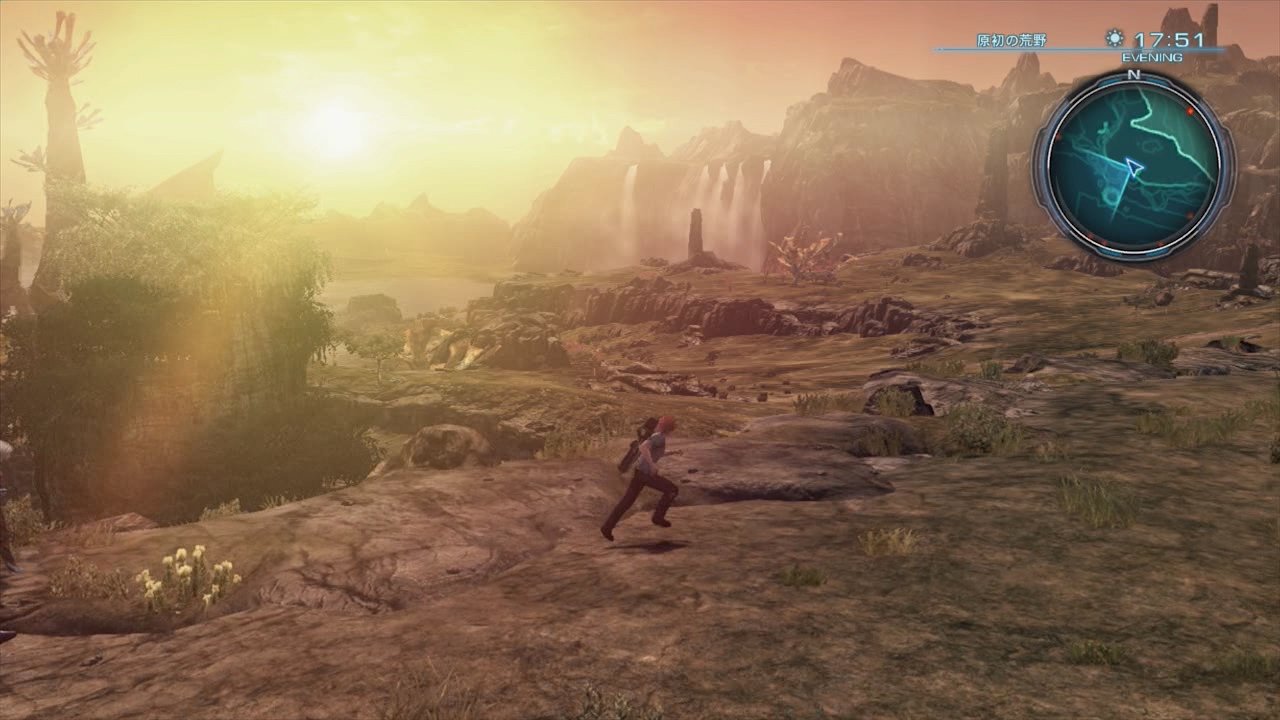
Like Mira itself, trying to get a grasp of Xenoblade Chronicles X can be inscrutable and vexing at times. But in a way, that quest for knowledge often mimics the plight of the humans who find themselves stranded on the alien planet that becomes humanity's new home. Understanding Xenoblade's complexity isn't easy or always immediately obvious, but stick with it and you'll find a vast, untamed land where simply existing is its own reward.
More info
| Genre | Action RPG |
| Description | A portion of the human race has been left on earth after a devastating war. As one of the many abandoned, you must do what you can to survive. |
| Platform | "Wii U" |
| US censor rating | "Teen" |
| UK censor rating | "" |
| Release date | 1 January 1970 (US), 1 January 1970 (UK) |
